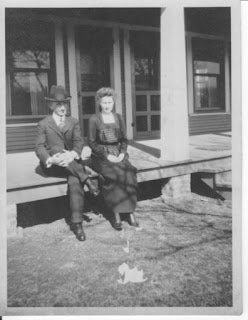I’ve been reading a very interesting book about Daniel Boone called Boone: A Biography, by Robert Morgan (Algonquin Books of Chapel Hill, 2007). As my niece Nina McClellan Atchley discovered years ago, Daniel Boone was a relative. He was actually my fifth great-grand uncle; his sister Hannah Boone Stewart Pennington was my fifth great-grandmother.
I confess that I knew little of Daniel Boone beyond the Disney version of his story. The more I read about him, the more I identify with certain traits he held. In the book, he’s described as both a loner and gregarious. He was terrible with money and constantly in debt. It wasn’t that he was a deadbeat—he actually put a lot of effort into his money-making adventures; it’s just that he risked a lot on his vision of his future, often finding that things didn’t quite work out the way he’d planned. That never seemed to stop him from seeking new adventures, new frontiers to explore. He was restless, finding it almost impossible to stay home and settle into the daily life of an 18th century American farmer. He loved his wife and children, and yet he would take off for months, even years, at a time, while he searched for that patch of Eden that would satisfy him.
It was this passage from Boone that really resonated with me. Morgan quotes Lord Dunmore, the British-appointed governor of Colonia Virginia, as saying, “Americans…do and will remove as their avidity and restlessness incite them. They acquire no attachment to Place: But wandering about seems engrafted in their Nature; and it is a weakness incident to it, that they should forever imagine lands Further off, are Still better than those upon which they are already Settled.” Guilty as charged.
Daniel Boone kept moving west until he was able to settle with his family in what he must have seen as his ultimate paradise: the lush and fertile land of Kentucky. He had made a few trips to Kentucky before he actually settled there. I can only imagine how much his wife, Rebecca, must have rolled her eyes every time he came back from one of his excursions filled with tales of the promised land that lay just beyond the mountains. I’m sure it didn’t help that he usually came back empty-handed and penniless, having lost whatever furs, hides, ginseng, and other treasures he had acquired on his trip to Cherokee, Shawnee, Delaware, and other indigenous groups not so keen on having white settlers move into yet another expanse of the land they called home.
Boone had a relationship of mutual respect with most of the Native Americans he encountered during his lifetime. Boone embraced their understanding of and reverence for the natural world, adopting many of their techniques for hunting and moving through difficult terrain. At times he was captured by Indians who wished to relieve him of his—in their minds illegally gotten—gains, the exchange between captors and captive was by all accounts relatively polite and even collegial. Even in his grief when his son James was killed by a group of Delawares, Shawnees, and Cherokees, angry at the encroachment into their hunting territory, Daniel seemed to understand that this was the price of the fight for land.
Daniel Boone was known for his wit and storytelling. Despite his love of solitude when he disappeared into the wilderness, Boone loved large gatherings of friends and families, where he would entertain his audience with jokes and hair-raising tales of some of his most dangerous adventures. He also loved to sing. One of my favorite anecdotes about Daniel Boone has to do with some men who hear a strange sound coming from a place deep in the wilderness. They follow the sound to find Boone, sitting by his campfire, all by himself, singing at the top of his lungs. My kind of man.
I know it might seem silly to some to look to distant relatives for the origins of one’s own character traits, but I can’t help but think that there’s a certain truth in such connections. Daniel Boone is recalled and admired for his love of adventure, his sense of honesty and his sense of humor, his loyalty, his philosophical approach to the ups and downs of life, and his reverence for nature. These are qualities that have been highly revered and encouraged in the families that are part of my lineage and tradition. There is truth in that.
Painting of Daniel Boone by Alonzo Chappel














_2yrsorso.jpg)


